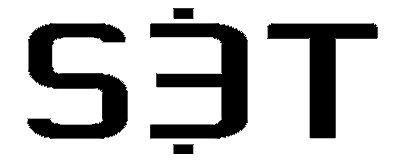S3T Fri Mar 31 - Big & Little Picture Thinking that helps you drive change successfully

Happy Friday! Welcome to your S3T Friday edition - we're continuing our series on change leadership skills that can help you and your organization have the impact you want to have.
Listen to this on the S3T Podcast
Today we're going to talk about a skill you and your team can learn together that will help you drive change successfully:
The ability to see and switch between the big picture and the little picture. To refine this a little further: the ability to focus on one, but not lose sight of the other.
The problem
Unfortunately most people think they are one or the other: I can be a big picture thinker, or a detailed thinker but not both. Even worse, most of us have the have a notion that one of these is legit and the other is not.
People who like to focus on the big picture dismiss detailed oriented people as small-minded, down in the weeds, lost in the details.
People who consider themselves detail-oriented and practical often dismiss strategic thinkers as dreamers, who come up with impractical ideas and want to "boil the ocean."
Both of these are forms of disrespect - not good for the team culture - and are misguided:
The truth is sometimes "small details" are actually big problems in disguise.
And if you've ever watched lava flow into the sea, you know that the ocean can boil. The history of innovation is just a series of people thinking something is impractical, then later embracing it as the new status quo, and later innovating something else that is also - at first - thought to be impossible. In every one of these innovation journeys, success of big ideas hinges on yes, pivotal details.
Proactive & Precise
We need both: Big picture thinking and small picture thinking. Why?
- Big picture thinking helps you be proactive.
- Small detail thinking helps you be precise.
You need to foster a team culture that respects both.
A team that thinks proactively and works with a precision mindset is an unstoppable force.
Building Big Picture and Detail Skills
Here's some ways you can strengthen your ability to between these contexts and helping your team learn to do the same.
- Read widely. Develop a wide ranging random reading habit. Look at how technologies are being used in other industries. It might suggest patterns of how your industry will be using that same tech in a few years.
2. Ask Big Questions. Practice asking yourself and your teams questions that prompt big-picture thinking and dot-connecting:
- "How can we gain an advantage here?"
- "What if we tried ___ ?"
- "How is this going to evolve in the next couple years?"
- "Is there an overall trend here?"
- "Are there examples from (history, legal precedent, or from your industry) that offer us a pattern to follow?"
3. Ask Small Questions. Blend these with the kinds of questions that provoke detailed thinking:
- "What are we missing?"
- "If we tried this, what seemingly insignificant issue might turn into big problem for us?"
- "Who has the most fine-grained understanding of this (topic, tool, issue)?"
- "Have we done our homework on this...if someone double-clicks on this assertion what supporting data do we have?"
4. Demonstrate Respect for Big and Small contexts. When designing or planning always be willing to read, study, talk through details. When details are discussed, lean forward in your chair. Pay attention. Thank people for pointing it out. Demonstrate that you place importance on it.
If its appropriate to suggest another time when the right people can focus on the details in depth, then do so. But it should be known that details are welcomed not shunned. They might be important.
Likewise, when big ideas, anticipated changes or dots are being connected in a conversation, pay attention, lean forward. Thank people. Show your team that this matters too.
Why this matters SO much
The status quo is full of false tradeoffs:
- It can be secure or convenient but not both
- It can be compliant in a regulated industry or it can be fast and efficient but not both.
These false tradeoffs are examples of failure at both the detailed and the big picture level:
- Failure to sweat the details and find a way to achieve the full set of requirements.
- Failure to recognize how painful and burdensome their false tradeoff is on their customers, community or other stakeholders.
A precision mindset that can focus on the big picture without losing sight of pivotal details, and focus on the pivotal details without losing sight of the big picture will have a huge advantage when driving change. It will help you and your team gain the insights to successfully implement a needed transformation or new capability.
These are fundamental mindset lessons - ways for you and your team to learn to think and see the world, in order to maximize your effectiveness.
Thanks again for reading, listening and sharing. Have a great weekend!
Ralph
PS. Get ready for another great S3T Sunday Edition! We'll have more insights and indicators on the economics shaping the decisions of your customers and stakeholders, as well as emerging tech and innovation that you want to understand so you can increase your impact.
Where will you read, reflect and think this weekend?


Member discussion